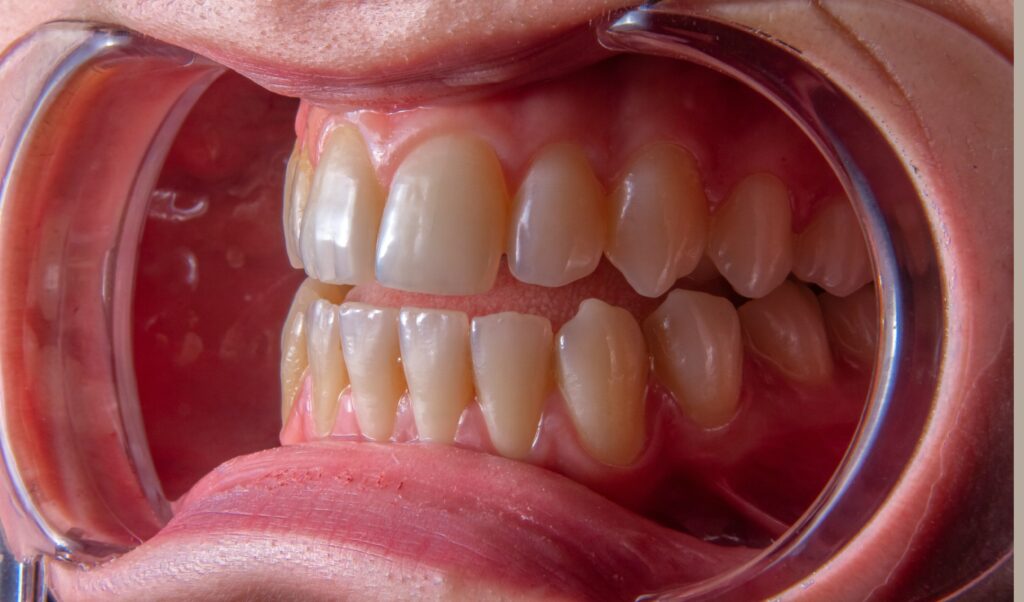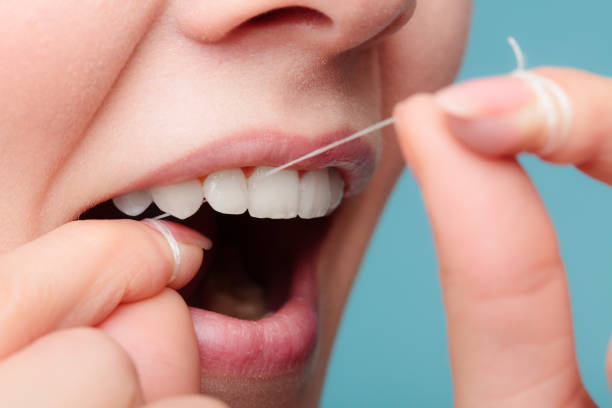Many people have the common problem of food lodgement in between their teeth. There might be a few reasons behind it. Here are some reasons listed below:
1. Spacing Between Teeth
Gaps between teeth, known as open contacts, can trap food particles. This can be prevented by regular brushing and flossing.

2. Cavities
Cavities can create holes in your teeth where food can get stuck. In this condition, you need to seek help from your dentist and get the filling done.
3. Mouth Disease
Conditions like periodontal disease can cause bone or tooth loss, leading to gaps where food can get trapped. Scaling and deep cleaning can be done in by your dentist to cure it and for advanced surgery and bone grafting can be done.
4. Dental Procedures
Some dental procedures, like the removal of a wisdom tooth, can create flaps in the gums where food can get stuck.
5. Damaged Fillings or Crowns
Fillings or crowns that are damaged or do not correctly can create gaps for food particles.
6. Impacted Teeth
Teeth that have not fully emerged from the gum can be difficult to clean making it easier for food to remain stuck.
What you can do in this situation?
- Brushing twice a day – in the morning and at night before going to bed.
- Flossing everyday – You can use regular floss or a pick type floss whatever suits you better.
- Use mouthwash – you can use mouthwash available on the market in different formulations according to the directions given. Warm saline rinse can be helpful in this particular situation.
How Flossing Removes Stuck Food
Flossing involves using a thin piece of string designed to slide between your teeth. Here’s how it helps:
-
Reaches Tight Spaces: Floss can access areas that a toothbrush cannot, such as the tight gaps between teeth and below the gumline.
-
Dislodges Food Particles: By gently sliding the floss back and forth, you can remove food debris that is stuck in hard-to-reach places.
-
Breaks Up Plaque: Regular flossing also helps break up and remove plaque, a sticky film of bacteria that forms on your teeth and gums.
-
Prevents Bacteria Growth: Removing trapped food reduces the chances of bacteria thriving in your mouth, preventing bad breath and gum irritation.
Steps for Effective Flossing
To make the most out of flossing, follow these simple steps:
-
Use the Right Length: Cut about 18 inches of dental floss and wind most of it around your middle fingers, leaving a few inches to work with.
-
Hold Firmly: Hold the floss tightly between your thumbs and index fingers.
-
Slide Gently: Gently insert the floss between your teeth using a sawing motion. Be careful not to snap it, as this can hurt your gums.
-
Curve Around the Tooth: Curve the floss into a C-shape around each tooth and slide it up and down to clean the sides and below the gumline.
-
Use a Clean Section: Use a fresh section of floss for each tooth to avoid spreading bacteria.
Benefits of Flossing
Incorporating flossing into your oral care routine offers numerous benefits, including:
-
Improved Oral Hygiene: Flossing removes debris and plaque, keeping your teeth and gums clean.
-
Prevention of Cavities: By removing food particles, you reduce the risk of decay in hard-to-reach areas.
-
Healthier Gums: Flossing helps prevent gum inflammation, bleeding, and gum disease.
-
Fresher Breath: Clearing trapped food reduces bacteria that cause bad breath.
Choosing the Right Type of Floss
There are various types of dental floss available, including:
-
Waxed Floss: Ideal for tight spaces as it slides easily.
-
Unwaxed Floss: Great for wider gaps and those who prefer a more natural feel.
-
Floss Picks: Convenient for on-the-go use.
-
Water Flossers: A high-tech alternative for those who find traditional floss challenging.
Conclusion
Flossing is a vital step in maintaining a healthy smile and preventing dental issues. By removing stuck food and plaque, you can enjoy fresher breath, healthier gums, and a lower risk of cavities. Make flossing a part of your daily routine to keep your teeth in top shape. Remember, a little effort goes a long way in achieving a bright, confident smile!

If the condition does not cure after regular brushing and flossing, Please contact your dentist as early as possible.
Visit us at: www.dentalcaresuri.com
Contact us: CONTACT


1 thought on “Food getting stuck in teeth? Can Flossing help?”
Well written